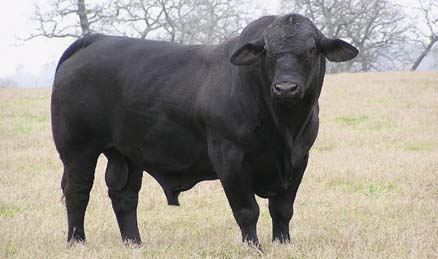Type the name of the breed you're looking for below
[wpdreams_ajaxsearchlite] Don't see the breed your're looking for? Click here and let us know!
Brangus cattle
| Place of Origin | United States of America |
| Origin | The effort to develop the Brangus breed began as early as 1912 and the first organization of Brangus breeders was chartered in 1949. A review of the development of the Brangus breed would take us back beyond the founding of the American Brangus Breeders Association in 1949; however, registered Brangus descend from the foundation animals recorded that year or registered Brahman and Angus cattle enrolled since then. Much of the early work in crossing Brahman and Angus cattle was done at the USDA Experiment Station in Jeanerette, Louisiana. According to the USDA 1935 Yearbook in Agriculture the research with these crosses started about 1932 During the same period, Clear Creek Ranch of Welch, Oklahoma and Grenada, Mississippi, Raymond Pope of Vinita, Oklahoma, the Essar Ranch of San Antonio, Texas, and a few individual breeders in other parts of the United States and Canada were also carrying on private experimental breeding programs. They were looking for a desirable beef-type animal that would retain the Brahman's natural ability to thrive under adverse conditions. The early breeders from 16 states and Canada met in Vinita, Oklahoma, on July 2, 1949, and organized the American Brangus Breeders Association, later renamed the International Brangus Breeders Association (IBBA), with headquarters in Kansas City, Missouri, and eventually San Antonio, Texas, where the permanent headquarters has been located since January, 1973. There are now members in nearly every state, Canada, Mexico, Australia, Central America, Argentina, and Zimbabwe in Africa. |
| Purpose | Brangus is a hardy and popular breed of beef cattle. |
| Appearance | Registered Brangus must be 3/8 Brahman and 5/8 Angus, solid black or red. |
| Horns | Polled (Hornless) |
| Other Considerations | Research at Louisiana has indicated that Brangus cows increased their weights during the summer months while Angus cows lost weight, indicating that they were more adapted to coastal climates. Calves from Brangus were heavier at birth and weaning and for total pounds produced per cow. The Angus had an advantage in conception rate and calved earlier, and the calves were more vigorous at birth and survived better to weaning. The breed have proven resistant to heat and high humidity. Under conditions of cool and cold climate they seem to produce enough hair for adequate protection. The cows are good mothers and the calves are usually of medium size at birth. The cattle respond well to conditions of abundant feed but have exhibited hardiness under conditions of stress. Additional information about all aspects of the Brangus breed and community is available through the International Brangus Breeders Association (IBBA). |



